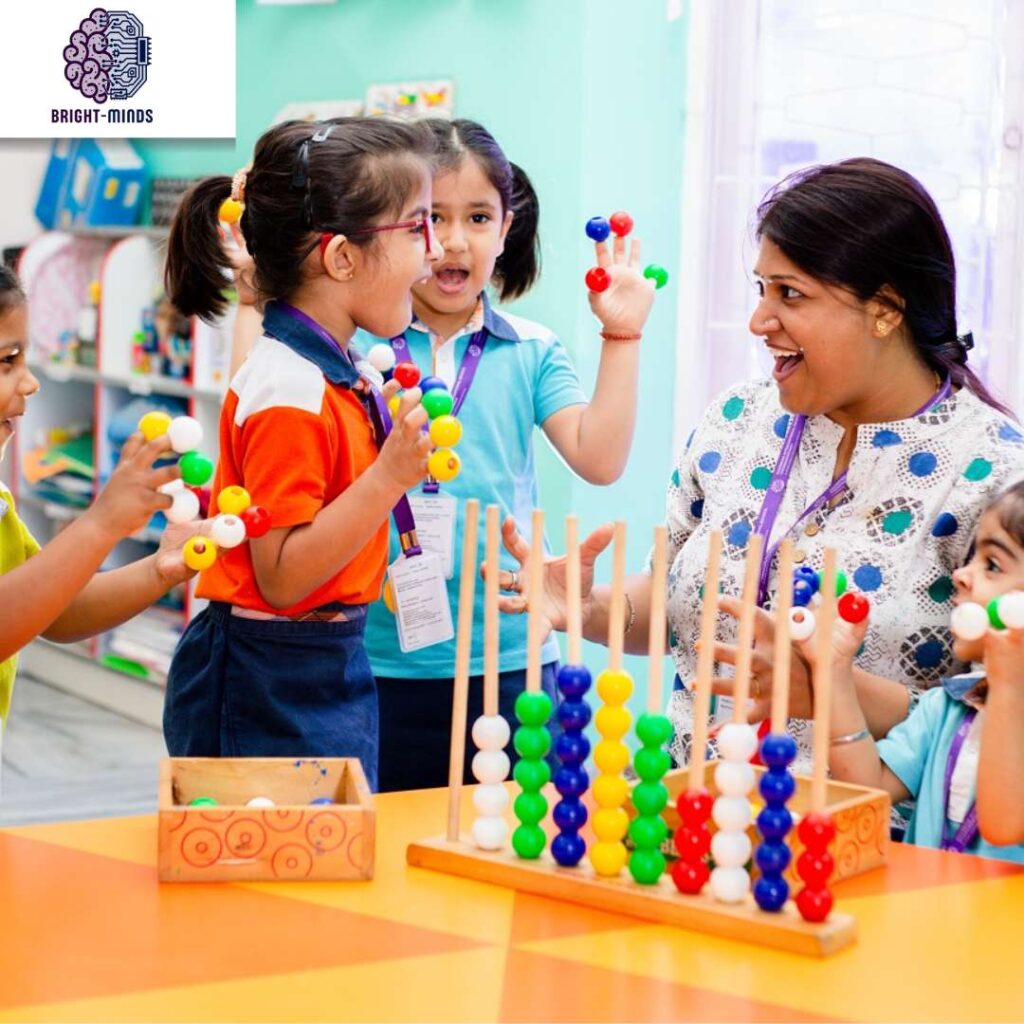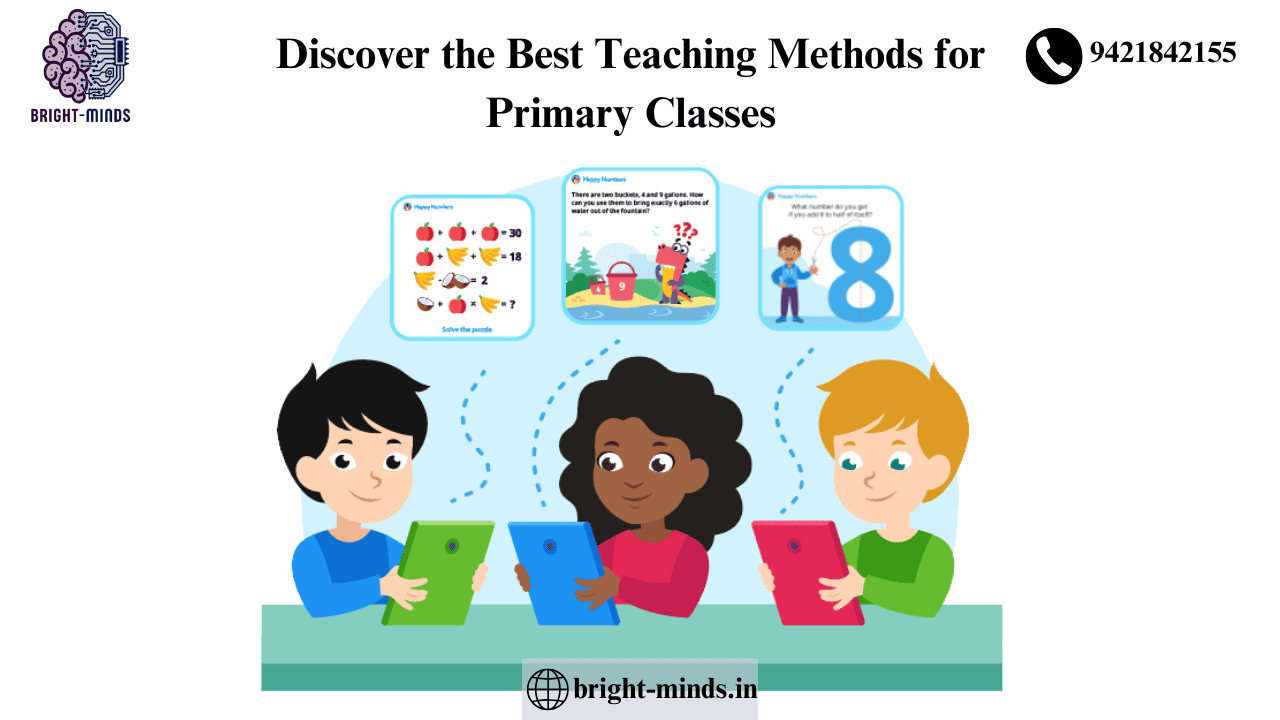Discover the Best Teaching Methods for Primary Classes: A Guide for Effective Learning
When it comes to teaching primary school students, one of the most important things to keep in mind is that children at this age are still developing their cognitive, emotional, and social skills. As a result, the methods used in the classroom should be engaging, interactive, and designed to nurture their curiosity. Here’s a closer look at some of the best teaching methods that can help create a dynamic and effective learning environment for primary classes.
Interactive Learning: Engaging Students with Hands-On Activities
Interactive learning focuses on involving students actively in the learning process. This method goes beyond traditional lectures and includes activities such as games, experiments, and projects that encourage exploration. Young children learn best when they can touch, feel, and experience what they’re studying.
Benefits:
- Fosters creativity and critical thinking.
- Helps students retain information better through hands-on experience.
- Makes learning fun and less stressful.
Examples:
- Science experiments to explore concepts like gravity or plants.
- Art and craft sessions to teach colors, shapes, and patterns.
- Group games to practice math skills, like counting or basic arithmetic.
Storytelling: Enhancing Learning Through Narratives

Storytelling is a powerful tool for teaching young children. It captures their attention, helps them understand concepts better, and fosters emotional development. By weaving educational content into stories, teachers can make lessons more memorable and relatable.
Benefits:
- Improves listening and comprehension skills.
- Builds vocabulary and language skills.
- Encourages imagination and emotional connection to the subject matter.
Examples:
- Reading a story that incorporates math or science concepts, like a tale of a character solving problems using addition and subtraction.
- Using fables or fairy tales to teach moral values or lessons about life.
- Interactive storytelling where students help build the story with their ideas and responses.
Visual Learning: Using Pictures, Videos, and Diagrams
Young children are often visual learners, meaning they absorb information better through images, colors, and visual cues. Visual learning helps simplify complex topics and makes abstract ideas easier to understand.
Benefits:
- Enhances memory retention through visual associations.
- Breaks down complex information into digestible content.
- Encourages students to make connections between images and words.
Examples:
- Using flashcards, posters, or charts to teach new vocabulary, numbers, or scientific concepts.
- Showing educational videos that explain historical events or the life cycle of animals.
- Creating diagrams or mind maps to break down lessons in subjects like math or social studies.
Collaborative Learning: Learning Through Teamwork
Collaborative learning involves students working together in small groups to complete tasks or solve problems. This method fosters a sense of community, promotes social skills, and encourages peer-to-peer learning.
Benefits:
- Develops communication and teamwork skills.
- Allows students to learn from each other and share knowledge.
- Builds confidence in expressing ideas and asking questions.
Examples:
- Group projects where students create a poster or presentation on a subject.
- Cooperative games that require students to work together to solve problems, such as puzzles or scavenger hunts.
- Peer teaching, where more advanced students help their classmates with a particular subject or skill.
Gamification: Making Learning Fun
Gamification involves applying game mechanics (like scoring points, earning rewards, or completing challenges) to the classroom environment. This method turns learning into a fun and competitive activity that motivates students to participate.
Benefits:
- Increases student engagement and motivation.
- Reinforces concepts through repetition in a fun way.
- Provides immediate feedback through quizzes and challenges.
Examples:
- Using digital apps or platforms that reward students for completing assignments or achieving learning goals.
- Organizing classroom competitions, such as spelling bees or math challenges, where students can earn prizes or points.
- Using board games to practice vocabulary or math concepts.
Personalized Learning: Tailoring Education to Individual Needs
Personalized learning recognizes that every student has unique needs, interests, and learning paces. This approach aims to tailor lessons and activities to each child, providing more targeted instruction and helping them learn at their own speed.
Benefits:
- Helps children feel supported and valued.
- Allows for a more customized approach to learning, addressing strengths and weaknesses.
- Increases student confidence by working at an appropriate pace.
Examples:
- Differentiating assignments based on student ability, such as giving extra practice to students struggling with reading or offering advanced challenges to those who need more stimulation.
- Using technology to adapt lessons and quizzes to match students’ learning styles and progress.
- Offering one-on-one instruction or small-group sessions for children who need extra help in certain subjects.
Positive Reinforcement: Encouraging Good Behavior and Effort
Positive reinforcement is a teaching method where desirable behavior is rewarded to encourage repetition. This method helps build a positive classroom environment, boosting students’ self-esteem and motivation.
Benefits:
- Reinforces good behavior and encourages a positive classroom culture.
- Helps students feel appreciated and valued for their effort.
- Motivates children to keep trying and improving.
Examples:
- Giving stickers or small rewards when students complete tasks or demonstrate good behavior.
- Offering verbal praise or certificates for effort, progress, or achievements.
- Creating a reward system, where students earn points for good behavior or academic success, which can be exchanged for rewards.
Inquiry-Based Learning: Encouraging Curiosity and Exploration
Inquiry-based learning is a student-centered approach where children ask questions, explore, and investigate topics to find answers. This method encourages critical thinking, problem-solving, and curiosity.
Benefits:
- Encourages children to think critically and independently.
- Promotes exploration and creativity.
- Helps students learn through discovery rather than rote memorization.
Examples:
- Creating a “question wall” in the classroom where students write down questions they have about a subject, which can later be explored together.
- Encouraging students to conduct simple research projects or experiments.
- Using open-ended questions to prompt discussion and deeper thinking.
Conclusion
The best teaching methods for primary classes are those that engage students, encourage curiosity, and cater to their individual learning needs. By incorporating interactive activities, storytelling, visual aids, and collaboration, teachers can create a dynamic and fun classroom environment. These methods not only make learning enjoyable but also ensure that students develop essential skills like problem-solving, communication, and critical thinking, laying a strong foundation for their future academic success.
you may be interested in this blog here:-

